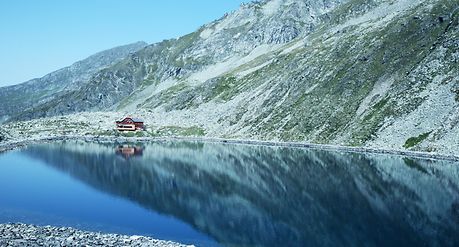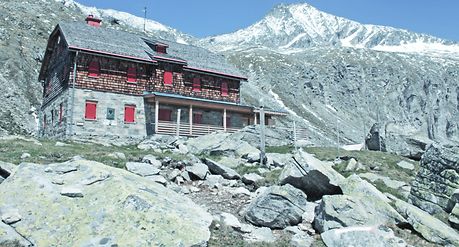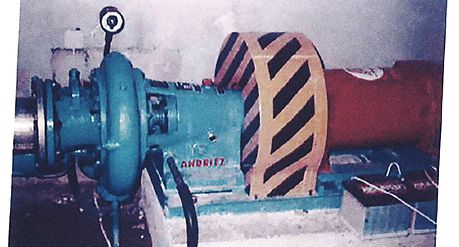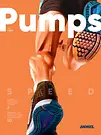Have a look at our categories
Press pause
The race against the pace of life
Acceleration: a phenomenon of our time
It is an irony of our modern lives: technical inventions such as smart home systems, apps or intelligent speakers with voice assistants answering to names like Alexa, Siri or Cortana are supposed to relieve us of work or at least make it easier and to give us more time to relax. But often the exact opposite is true. Given more and more smart devices in daily life, originally invented to save us time, we want to use that time to do even more and more things. We get even more stressed, and so our lives end up being more fast-paced and hectic than ever. We are under constant pressure to do as much as possible, to savor life and to not miss anything. We want to do as much as possible as quickly as possible at the same time.

Doesener Lake in Austria
Like little ants, we rush from A to B to balance work, children, friends, and daily errands. We are permanently on the go and cannot calm down. The feeling of just doing nothing makes us feel anxious. If you look at it from the outside, it seems pretty absurd. Speed Dating, Speed Walking, Speed Yoga – everything needs to be fast. We are living the fast life rather than the good life. Faster is always better and busier is best. "Acceleration" is a phenomenon of our time. We live in a world stuck in a fast forward mode. Life moves at such a fast pace that it seems to pass us by before we can really enjoy it. However, the key to better performance and the satisfaction of our striving for perfection is not speeding up, but slowing down in the right moment, making people do things better no matter if it comes to work, exercise or being creative.
Burned out: a world obsessed with speed and its race against the clock
Affected people say it feels like a heart attack or stroke. Sweat attacks, claustrophobic fears, and an oppressive feeling. Body and mind are exhausted, the ability to concentrate and focus suddenly disappears – the symptoms of the burn-out syndrome. A man-made civilization disease?
The controversial burn-out syndrome shows people's inability to make proper use of their ability to decide over the degree of their engagement and to choose among alternatives. It is a disease of their freedom, a form of
self-inflicted immaturity. Because we as humans are the ones who decide on the limits of our commitment and can choose what we want to be confronted with and what not. However, the pressure to succeed, perfectionism and constant stress often lead us to forget how to say "no ".
The art of slowing down: escaping everyday life
Also in the U.S. mindfulness is a big issue. With its "Search Inside Yourself" employee program, a mindfulness initiative designed to empower employees to seek answers within, Google is seen as the pioneer in this field. Such mindfulness programs are also spreading outside of the Silicon Valley. Goldman Sachs, Nike or the supermarket chain Target teach their employees to consciously pause and take a breath. Even the Marine Corps of the U.S. Army want to teach soldiers in this way to switch off and forget the world for a moment.
In the meantime, movements such as the "Slow Living Conference Berlin", the first German conference for "deceleration, simplicity and sustainability", or the "Citta Slow" movement in Italy are sprouting in Europe. A Citta Slow refers to a city whose inhabitants still know how to enjoy a slow, conscious life, the varied urban leisure activities, art, culture, and architecture, but also the course of nature. In other words, they not only know, but also live their lives consciously and enjoy its possibilities to the fullest.

The Arthur-von-Schmid-Haus is located in the Hohe Tauern National Park, a high mountain region of the Central Alps in Austria.
Many people choose the path back to nature to escape the hustle and bustle of everyday life and to free their body and soul. Whether short hikes or longer pilgrimages, the calming environment of nature helps people to switch off. Year after year, millions of people set out for places of pilgrimage around the world. Last year alone, more than 300,000 people arrived in Santiago de Compostela, Spain.
Just like no hiking boots come without blisters, there is no hiking without a stop for a bite to eat and rest in a rustic mountain hut. Have you ever wondered how these huts are powered? Our former colleague Johann Tesch has an answer to this question.
If you want to know who Johann Tesch is, how he is connected to ANDRITZ and what his answer is, then continue reading this story in our magazine.

The smallest ANDRITZ pump turbine type KT 1530 with 18 kW for the energy supply of the Erzherzog Johann Hütte in Austria.



